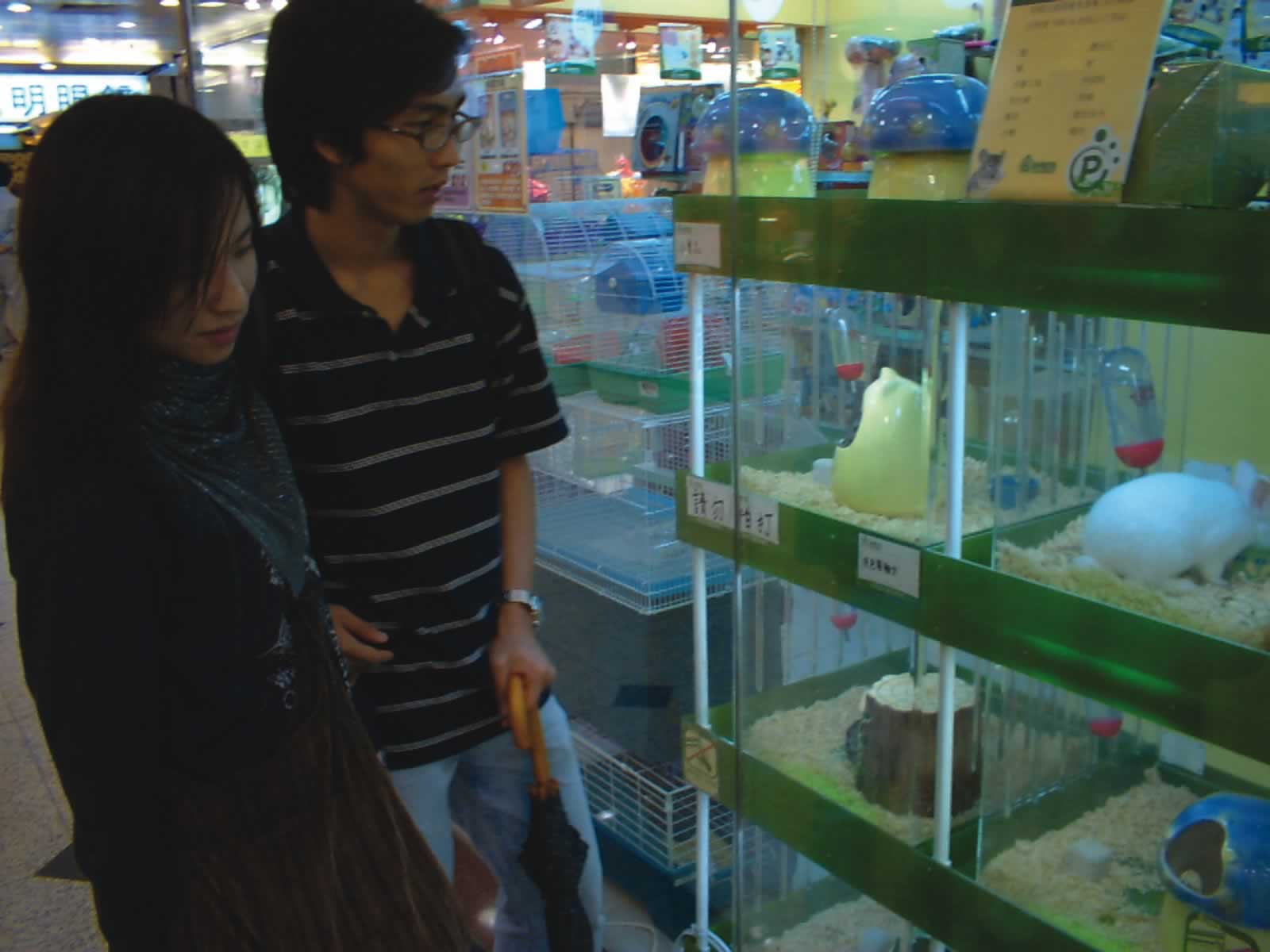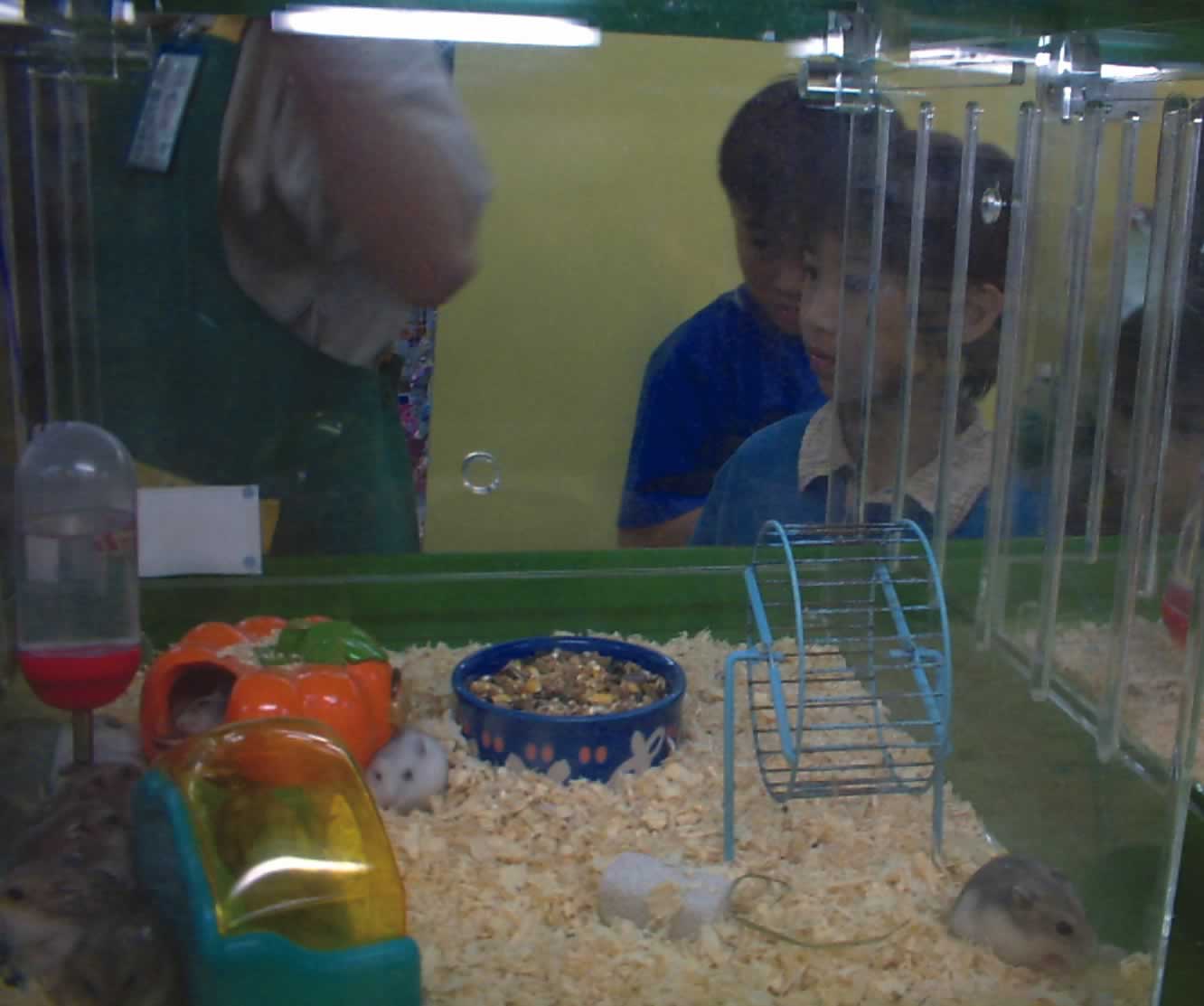'No kill' policy for abandoned pets a first in Asia
Love your pets
By Penelope Yau, Keith Yee & Cindy Lam
Abandoned dog waits for a new home. People and pets can maintain harmonous relationships if people treat them in a responsible manner.
More than 12,200 dogs and 2,800 cats were put down last year by the Society for the Prevention of Cruelty to Animals. The high rate of euthanasia caused the society to launch a “no-kill” policy that aims to turn Hong Kong into the first no-kill city in Asia.
Dr. John Wedderburn, chairman of the No-Kill Working Group, said, “We can’t kill healthy animals just because they can’t find a home. It’s inhumane. It is against the principle of being a humane organization.
“Seeing the success of the ‘no-kill’ policy in several cities around the world, we hope to do the same in Hong Kong.”
On 1 August, the Society for the Prevention of Cruelty to Animals stopped accepting dogs surrendered by citizens.
Dr. Wedderburn said this is the beginning of a gradual process to turn Hong Kong into a no-kill city.
Doris Yiu, senior manager of the SPCA, said it takes in animals for which it can possibly find homes, such as healthy, popular breeds of puppies.
She said the word no-kill is quite misleading. In fact, the SPCA still carries out euthanasia in some cases. Its vets continue to terminate the lives of very sick and old animals. “That’s done for their benefit. We do this so as to end their suffering,” said she.
The SPCA also opened a boarding kennel that houses about 20 animals in its headquarters in Wan Chai. Pet owners can opt to place their animals in the kennel for $90 a day while it waits to be adopted.
When owners decide to give up their pets, the SPCA gives counseling and asks them to reconsider their decisions.
Dr. Wedderburn said SPCA officers and counselors try to offer pet owners alternatives to surrendering their animals. For example, some surrender their dogs because they bark too loudly. The SPCA teaches owners what to do and helps them to work out a solution.
If owners still insist giving up thier pets, they can take their animals to the Agricultural, Fisheries and Conservation Department or to private vets.
“We hope people think carefully before they give up their pets. We don’t want them to think taking pets to the SPCA is a convenient way to dump their animals. People should be responsible for their own pets,” said Dr. Wedderburn.
According to Shiran Lo, director of Hong Kong Cats Salvation Army, the government used to kill unwanted animals by using carbon dioxide or gassing them in a gas chamber.
As reported by Apple Daily, dogs and cats would unconsciously bite or step on each other before death. The department undertook this cruel treatment because it was cheap.
Miss Yiu of the SPCA commented that it was not a humane way of handling animals. They found it highly unacceptable. Therefore, the SPCA decided to perform the killing themselves. “We wanted to make sure that animals also die with dignity.”
The government has improved the methods of destruction over the years. Like the SPCA, it uses injections to put animals down. Now the SPCA holds that it is time to give this job back to the government.
As a step forward to protect the rights of animals, the no-kill policy won support from the government and most animal welfare organizations.
“The scheme so far has been quite successful,” said Dr. Wedderburn.
“I’m very happy that things went quite smoothly. Most people support the policy once they understand the logic and humanity of it.”
He said with the no-kill policy, people now put more effort into finding alternatives for their pets. That is one of the objectives of the scheme.
Resources used to carry out euthanasia can now be used more effectively for the benefit of animals.
Miss Yiu pointed out that money could be spent on behavioral training and grooming now. Because trained and well groomed animals can find new homes more easily, relocation of resources makes better lives for the strays.
The scheme, however, is not fully appreciated by everyone.
Miss Lo said, “The no-kill city is ideal and actually quite utopian. Perhaps it’s a vision rather than something that we could possibly achieve.
She said the no-kill policy is not totally good.
It might result in increased numbers of stray animals.
She explained that irresponsible owners might just dump their pets on the streets if large organizations like the SPCA refuse to provide shelter.
She said the SPCA has the duty of handling the animals more properly, because it is partially funded by the government. Its role is different from that of other animal welfare charities.
The SPCA, together with other concerned organizations, hopes to work with the government to control the number of abandoned animals.
Said Dr. Wedderburn: “The problem of abandoned animals is that there are just too many.
“Take dogs as an example. There are about 25,000 to 30,000 surplus dogs wandering on the streets. What are we going to do with that large number of strays? Kill them all?”
He suggested the society work on the root cause of the problem — that is, to control the number of animals produced and imported. Killing is not an effective way of solving animal overpopulation.
“Many pet shops in Hong Kong order far more than they can actually sell. Animals that can’t be sold are then abandoned and become strays.
“Also, importation will continue as long as they still make a profit.
“They are negotiating with the government to impose new laws to control the situation.
“However, the government does not want to interfere with free trade in Hong Kong, especially under the current economic situation.
“Nothing has come through yet.
“But the government has agreed that they would continue to crack down on illegal imports and sales of animals,” he said.
The duty of the Agriculture, Fisheries and Conservation Department is not only to catch stray animals, but also to endorse permits to import animals.
According to the Public Health Ordinance and the Rabies Ordinance, the department is charged with preventing diseases in animals through regulating the imports of animals to Hong Kong.
From 1996 to 2000, 10 people were prosecuted for illegal sales of animals. During the same period, the government and SPCA inspectors recovered 409 illegally imported animals.
Miss Lo said, “The figures show that law enforcement is actually very lax.
“We all know the real situation is much worse.
“We really hope that our voices will be heard by the government and it will spend more resources on promoting animal rights.”
She said that the situation could be improved with proper education, which plays an important role in promoting animal welfare. If there are more resources, more things can be done.
“Compared with littering campaigns, the government is spending very little money on ethical education,” said Dr. Wedderburn.
Added Miss Yu: “Education about animal welfare could be carried out as a part of the school curriculum in Hong Kong.
“Topics such as relationships with animals can be included since animals are now playing an increasingly important role in our lives.”
Illegal sales a concern
By Betsy Ng & Keith Yee
Registered pet shops guarantee the health of animals.
A cause of the high rate of animal abandonment is illegal sales. Though the Agriculture, Fisheries and Conservation Department regularly sends staff to investigate the problem and take action when citizens report illegal sales, the problem is still serious.
According to the department, it arrests illegal pet sellers and charges them under the Public Health Ordinance.
But Doris Yiu of the Society for the Prevention of Cruelty to Animals said illegal sales of animals are common in the territory.
“In Mong Kok, you can find lots of illegally imported pets from China now. The prices are low.
“Though such dogs and cats are not purebred, they attract people who want to own a pet, with prices ranging from $200 to $300.”
The Agriculture, Fisheries and Conservation Department is responsible for endorsing permits for imported animals.
Said Miss Yiu: “Most of the illegally imported animals are not subject to any permits.
“Thus, their physical condition is not guaranteed.
“Some of the dogs may carry rabies or other infectious diseases.”
Shiran Lo of the Hong Kong Cats Salvation Army said, “I heard that once around 20 illegally imported cats were cramped together in a small cage while they were delivered to a pet shop in Mong Kok.
“Most of them suffocated and their hair was soaked with urine and turned yellow.
“It was cruel and depressing. But it’s common in Hong Kong.”
Moreover, when smugglers or illegal sellers are discovered or caught, their animals also become abandoned.
Said El Chan of the Society for Abandoned Animals: “Animals smuggled for illegal sales are fed with medicines that make them unconscious.
“They are then put under trucks in small cages.
“When they arrive, they are very weak and some of them might have died.
“Some pet owners find that their pets from illegal sales get ill easily.
“They do not know what to do since they do not have enough preparation before having a pet.
“They buy illegally imported pets just on impulse.
“Normally, they abandon the pets on streets or to some animal welfare organizations.
“So, illegal importation indirectly causes an increase in the number of abandoned pets.”
Apart from smuggled animals, there is illegal breeding in Hong Kong.
Pet owners breed their pets and sell them on the black market, said Miss Yiu.
.jpg)



